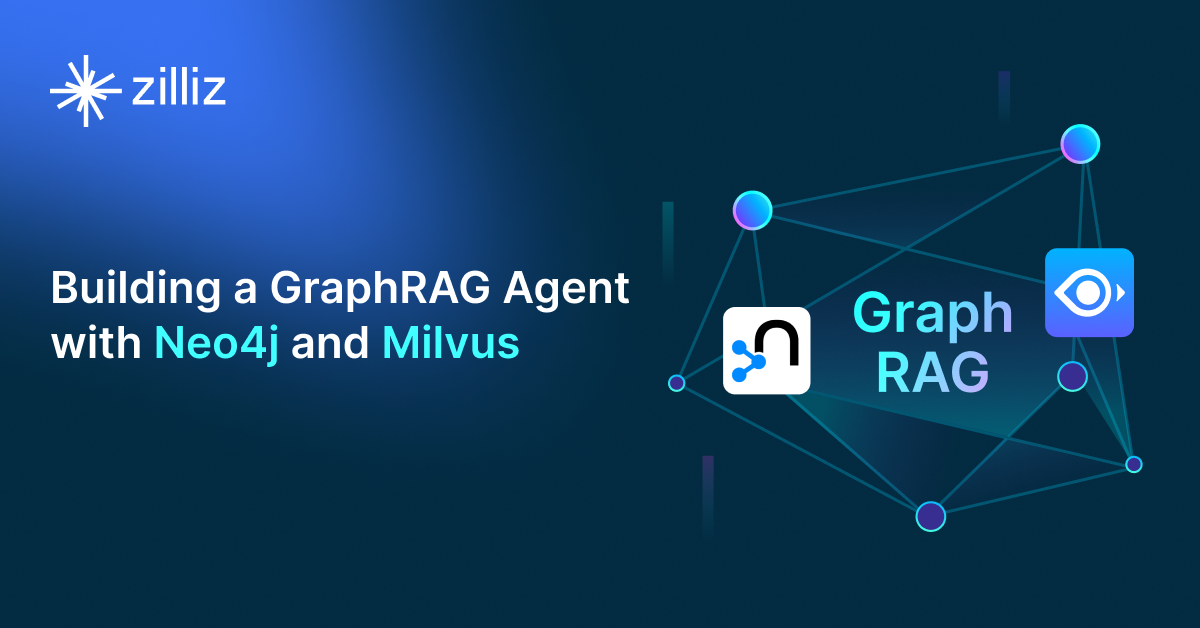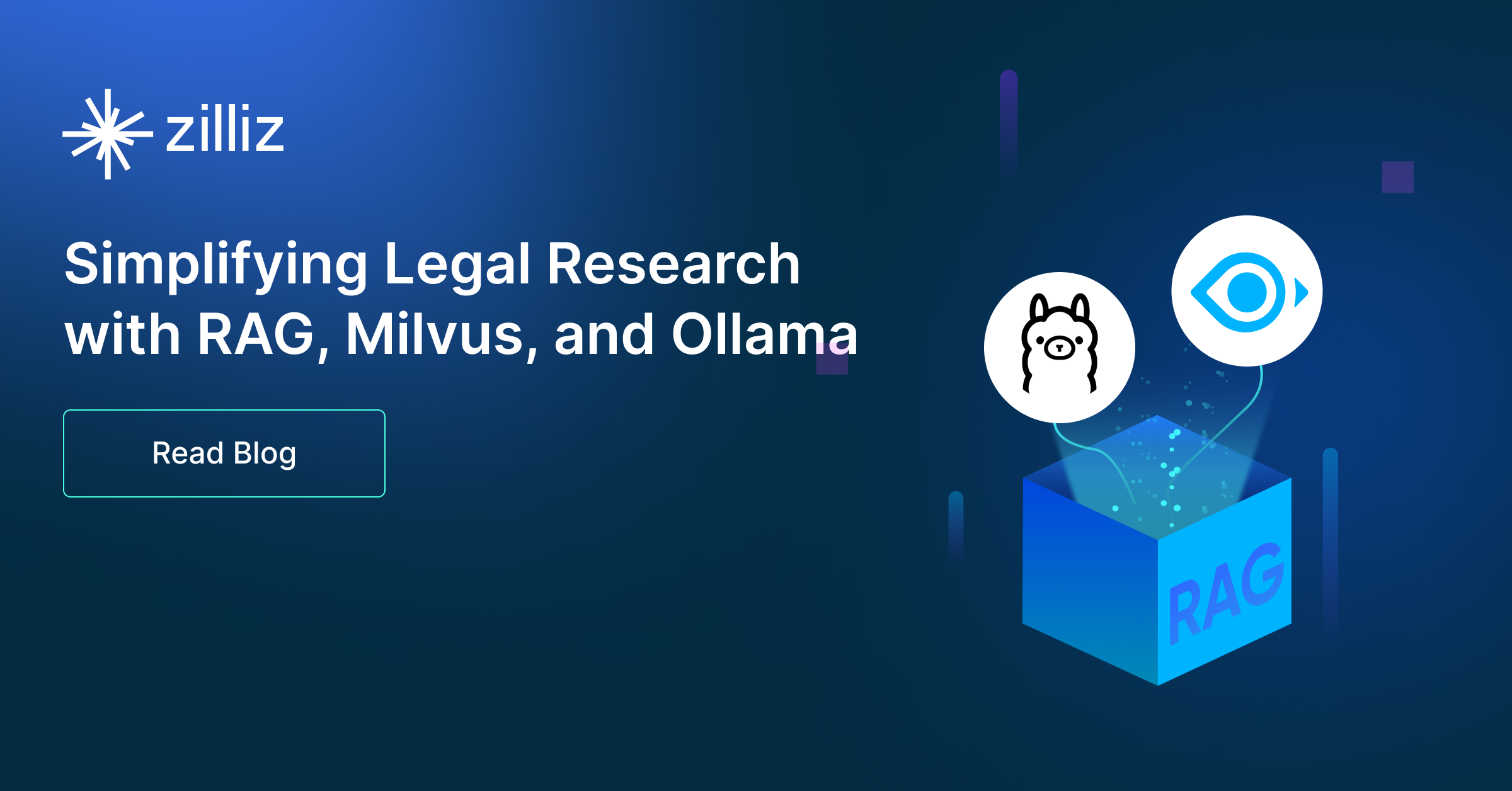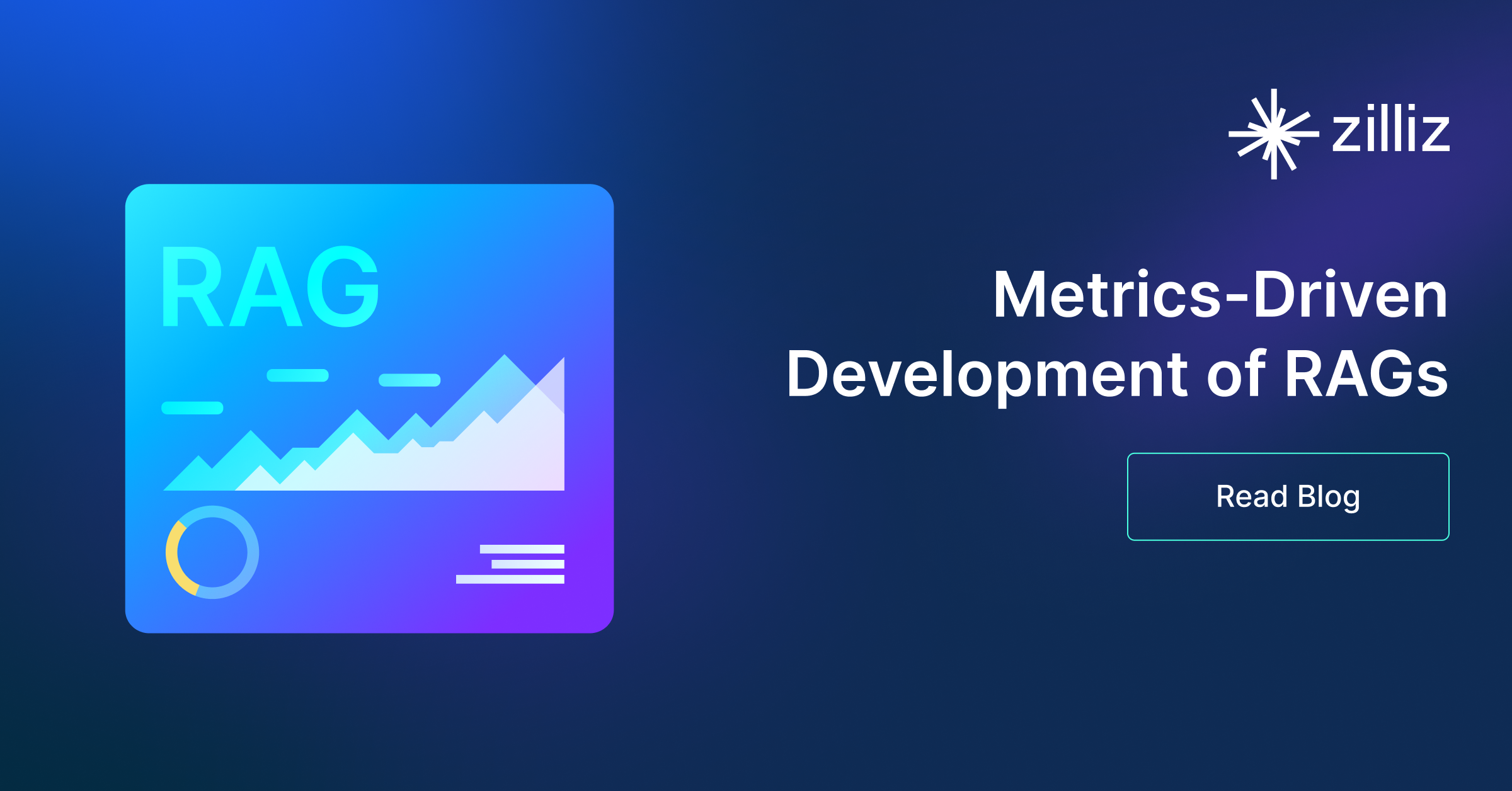Build RAG Chatbot with Haystack, OpenSearch, Amazon Bedrock Claude 3 Sonnet, and Ollama mxbai-embed-large
Introduction to RAG
Retrieval-Augmented Generation (RAG) is a game-changer for GenAI applications, especially in conversational AI. It combines the power of pre-trained large language models (LLMs) like OpenAI’s GPT with external knowledge sources stored in vector databases such as Milvus and Zilliz Cloud, allowing for more accurate, contextually relevant, and up-to-date response generation. A RAG pipeline usually consists of four basic components: a vector database, an embedding model, an LLM, and a framework.
Key Components We'll Use for This RAG Chatbot
This tutorial shows you how to build a simple RAG chatbot in Python using the following components:
- Haystack: An open-source Python framework designed for building production-ready NLP applications, particularly question answering and semantic search systems. Haystack excels at retrieving information from large document collections through its modular architecture that combines retrieval and reader components. Ideal for developers creating search applications, chatbots, and knowledge management systems that require efficient document processing and accurate information extraction from unstructured text.
- OpenSearch: An open-source search and analytics suite derived from Elasticsearch. It offers robust full-text search and real-time analytics, with vector search available as an add-on for similarity-based queries, extending its capabilities to handle high-dimensional data. Since it is just a vector search add-on rather than a purpose-built vector database, it lacks scalability and availability and many other advanced features required by enterprise-level applications. Therefore, if you prefer a much more scalable solution or hate to manage your own infrastructure, we recommend using Zilliz Cloud, which is a fully managed vector database service built on the open-source Milvus and offers a free tier supporting up to 1 million vectors.)
- AmazonBedrock Claude 3 Sonnet: A versatile AI model optimized for enterprise workloads, balancing speed and intelligence. Excels in high-accuracy reasoning, multilingual support, and cost-efficiency. Ideal for data analysis, content generation, retrieval-augmented generation (RAG), workflow automation, and multilingual applications. Seamlessly integrates with AWS services for scalable, secure AI solutions.
- Ollama mxbai-embed-large: A high-performance embedding model optimized for converting text into dense vector representations, excelling in semantic similarity tasks. It features multilingual support, efficient processing of long documents, and low-latency inference, making it ideal for semantic search, document clustering, content recommendation, and retrieval-augmented generation (RAG) pipelines.
By the end of this tutorial, you’ll have a functional chatbot capable of answering questions based on a custom knowledge base.
Note: Since we may use proprietary models in our tutorials, make sure you have the required API key beforehand.
Step 1: Install and Set Up Haystack
import os
import requests
from haystack import Pipeline
from haystack.components.converters import MarkdownToDocument
from haystack.components.preprocessors import DocumentSplitter
from haystack.components.writers import DocumentWriter
Step 2: Install and Set Up Amazon Bedrock Claude 3 Sonnet
Amazon Bedrock is a fully managed service that makes high-performing foundation models from leading AI startups and Amazon available through a unified API. You can choose from various foundation models to find the one best suited for your use case.
To use LLMs on Amazon Bedrock for text generation together with Haystack, you need to initialize an AmazonBedrockGenerator with the model name, the AWS credentials (AWS_ACCESS_KEY_ID, AWS_SECRET_ACCESS_KEY, AWS_DEFAULT_REGION) should be set as environment variables, be configured as described above or passed as Secret arguments. Note, make sure the region you set supports Amazon Bedrock.
Now, let's start installing and setting up models with Amazon Bedrock.
pip install amazon-bedrock-haystack
from haystack_integrations.components.generators.amazon_bedrock import AmazonBedrockGenerator
aws_access_key_id="..."
aws_secret_access_key="..."
aws_region_name="eu-central-1"
generator = AmazonBedrockGenerator(model="anthropic.claude-3-sonnet-20240229-v1:0")
Step 3: Install and Set Up Ollama mxbai-embed-large
pip install ollama-haystack
Make sure that you have a running Ollama model (either through a docker container, or locally hosted). No other configuration is necessary as Ollama has the embedding API built in.
from haystack import Document
from haystack_integrations.components.embedders.ollama import OllamaDocumentEmbedder
from haystack_integrations.components.embedders.ollama import OllamaTextEmbedder
text_embedder = OllamaTextEmbedder(model="mxbai-embed-large")
document_embedder = OllamaDocumentEmbedder(model="mxbai-embed-large")
Step 4: Install and Set Up OpenSearch
If you have Docker set up, we recommend pulling the Docker image and running it.
docker pull opensearchproject/opensearch:2.11.0
docker run -p 9200:9200 -p 9600:9600 -e "discovery.type=single-node" -e "ES_JAVA_OPTS=-Xms1024m -Xmx1024m" opensearchproject/opensearch:2.11.0
Once you have a running OpenSearch instance, install the opensearch-haystack integration:
pip install opensearch-haystack
from haystack_integrations.components.retrievers.opensearch import OpenSearchEmbeddingRetriever
from haystack_integrations.document_stores.opensearch import OpenSearchDocumentStore
document_store = OpenSearchDocumentStore(hosts="http://localhost:9200", use_ssl=True,
verify_certs=False, http_auth=("admin", "admin"))
retriever = OpenSearchEmbeddingRetriever(document_store=document_store)
Step 5: Build a RAG Chatbot
Now that you’ve set up all components, let’s start to build a simple chatbot. We’ll use the Milvus introduction doc as a private knowledge base. You can replace it your own dataset to customize your RAG chatbot.
url = 'https://raw.githubusercontent.com/milvus-io/milvus-docs/refs/heads/v2.5.x/site/en/about/overview.md'
example_file = 'example_file.md'
response = requests.get(url)
with open(example_file, 'wb') as f:
f.write(response.content)
file_paths = [example_file] # You can replace it with your own file paths.
indexing_pipeline = Pipeline()
indexing_pipeline.add_component("converter", MarkdownToDocument())
indexing_pipeline.add_component("splitter", DocumentSplitter(split_by="sentence", split_length=2))
indexing_pipeline.add_component("embedder", document_embedder)
indexing_pipeline.add_component("writer", DocumentWriter(document_store))
indexing_pipeline.connect("converter", "splitter")
indexing_pipeline.connect("splitter", "embedder")
indexing_pipeline.connect("embedder", "writer")
indexing_pipeline.run({"converter": {"sources": file_paths}})
# print("Number of documents:", document_store.count_documents())
question = "What is Milvus?" # You can replace it with your own question.
retrieval_pipeline = Pipeline()
retrieval_pipeline.add_component("embedder", text_embedder)
retrieval_pipeline.add_component("retriever", retriever)
retrieval_pipeline.connect("embedder", "retriever")
retrieval_results = retrieval_pipeline.run({"embedder": {"text": question}})
# for doc in retrieval_results["retriever"]["documents"]:
# print(doc.content)
# print("-" * 10)
from haystack.utils import Secret
from haystack.components.builders import PromptBuilder
retriever = OpenSearchEmbeddingRetriever(document_store=document_store)
text_embedder = OllamaTextEmbedder(model="mxbai-embed-large")
prompt_template = """Answer the following query based on the provided context. If the context does
not include an answer, reply with 'I don't know'.\n
Query: {{query}}
Documents:
{% for doc in documents %}
{{ doc.content }}
{% endfor %}
Answer:
"""
rag_pipeline = Pipeline()
rag_pipeline.add_component("text_embedder", text_embedder)
rag_pipeline.add_component("retriever", retriever)
rag_pipeline.add_component("prompt_builder", PromptBuilder(template=prompt_template))
rag_pipeline.add_component("generator", generator)
rag_pipeline.connect("text_embedder.embedding", "retriever.query_embedding")
rag_pipeline.connect("retriever.documents", "prompt_builder.documents")
rag_pipeline.connect("prompt_builder", "generator")
results = rag_pipeline.run({"text_embedder": {"text": question}, "prompt_builder": {"query": question},})
print('RAG answer:\n', results["generator"]["replies"][0])
Optimization Tips
As you build your RAG system, optimization is key to ensuring peak performance and efficiency. While setting up the components is an essential first step, fine-tuning each one will help you create a solution that works even better and scales seamlessly. In this section, we’ll share some practical tips for optimizing all these components, giving you the edge to build smarter, faster, and more responsive RAG applications.
Haystack optimization tips
To optimize Haystack in a RAG setup, ensure you use an efficient retriever like FAISS or Milvus for scalable and fast similarity searches. Fine-tune your document store settings, such as indexing strategies and storage backends, to balance speed and accuracy. Use batch processing for embedding generation to reduce latency and optimize API calls. Leverage Haystack's pipeline caching to avoid redundant computations, especially for frequently queried documents. Tune your reader model by selecting a lightweight yet accurate transformer-based model like DistilBERT to speed up response times. Implement query rewriting or filtering techniques to enhance retrieval quality, ensuring the most relevant documents are retrieved for generation. Finally, monitor system performance with Haystack’s built-in evaluation tools to iteratively refine your setup based on real-world query performance.
OpenSearch optimization tips
To optimize OpenSearch in a Retrieval-Augmented Generation (RAG) setup, fine-tune indexing by enabling efficient mappings and reducing unnecessary stored fields. Use HNSW for vector search to speed up similarity queries while balancing recall and latency with appropriate ef_search and ef_construction values. Leverage shard and replica settings to distribute load effectively, and enable caching for frequent queries. Optimize text-based retrieval with BM25 tuning and custom analyzers for better relevance. Regularly monitor cluster health, index size, and query performance using OpenSearch Dashboards and adjust configurations accordingly.
AmazonBedrock Claude 3 Sonnet optimization tips
Optimize Claude 3 Sonnet in RAG by fine-tuning chunking strategies (e.g., 512-1024 tokens) to balance context relevance and processing speed. Use semantic similarity thresholds to filter retrieved documents, reducing noise. Leverage system prompts to enforce output structure (JSON/XML) and constrain responses to retrieved content. Adjust temperature (0.2-0.5) for deterministic yet creative answers. Cache frequent queries and pre-embed common terms to lower latency. Test with hybrid search (keyword + vector) and prioritize high-quality embeddings. Monitor Bedrock’s inference metrics (e.g., latency, error rates) to tweak batch sizes and concurrency limits for cost-performance balance.
Ollama mxbai-embed-large optimization tips
Optimize Ollama mxbai-embed-large in RAG by preprocessing input text: clean, normalize, and chunk documents into 256-512 token segments for balanced context. Use batch inference to parallelize embedding generation, reducing latency. Fine-tune the model on domain-specific data if labeled pairs are available. Cache frequent or static embeddings to avoid recomputation. Ensure hardware acceleration (e.g., CUDA) is enabled. Test cosine similarity thresholds for retrieval accuracy and adjust based on downstream tasks. Regularly update the vector database with fresh data to maintain relevance.
By implementing these tips across your components, you'll be able to enhance the performance and functionality of your RAG system, ensuring it’s optimized for both speed and accuracy. Keep testing, iterating, and refining your setup to stay ahead in the ever-evolving world of AI development.
RAG Cost Calculator: A Free Tool to Calculate Your Cost in Seconds
Estimating the cost of a Retrieval-Augmented Generation (RAG) pipeline involves analyzing expenses across vector storage, compute resources, and API usage. Key cost drivers include vector database queries, embedding generation, and LLM inference.
RAG Cost Calculator is a free tool that quickly estimates the cost of building a RAG pipeline, including chunking, embedding, vector storage/search, and LLM generation. It also helps you identify cost-saving opportunities and achieve up to 10x cost reduction on vector databases with the serverless option.
 Calculate your RAG cost
Calculate your RAG cost
What Have You Learned?
By diving into this tutorial, you’ve unlocked the power of combining cutting-edge tools to build a robust RAG system from the ground up! You learned how Haystack acts as the backbone, seamlessly orchestrating the flow of data between OpenSearch’s lightning-fast vector database, Claude 3 Sonnet’s creative intelligence, and Ollama’s mxbai-embed-large model for generating rich, context-aware embeddings. Together, these components form a dynamic pipeline: Ollama transforms your raw text into meaningful vectors, OpenSearch stores and retrieves them with precision, and Claude 3 crafts human-like responses that feel both accurate and natural. Along the way, you saw how tweaking chunk sizes, adjusting similarity thresholds, and balancing speed with accuracy can optimize performance—pro tips that turn a good system into a great one. Plus, the free RAG cost calculator gave you a sneak peek into managing resources smartly, helping you estimate expenses without surprises.
Now you’re equipped to build RAG applications that don’t just answer questions but delight users with their depth and relevance. Imagine the possibilities—personalized chatbots, hyper-targeted search engines, or AI assistants that feel like collaborators. The tools are in your hands, and the tutorial’s blueprint ensures you’re ready to experiment, iterate, and innovate. So go ahead—fire up Haystack, play with Claude’s parameters, explore OpenSearch’s scalability, and let Ollama’s embeddings add that extra spark. The future of intelligent apps is yours to shape. Start building, keep optimizing, and watch your ideas come alive. The next breakthrough? It could be yours! 🚀
Further Resources
🌟 In addition to this RAG tutorial, unleash your full potential with these incredible resources to level up your RAG skills.
- How to Build a Multimodal RAG | Documentation
- How to Enhance the Performance of Your RAG Pipeline
- Graph RAG with Milvus | Documentation
- How to Evaluate RAG Applications - Zilliz Learn
- Generative AI Resource Hub | Zilliz
We'd Love to Hear What You Think!
We’d love to hear your thoughts! 🌟 Leave your questions or comments below or join our vibrant Milvus Discord community to share your experiences, ask questions, or connect with thousands of AI enthusiasts. Your journey matters to us!
If you like this tutorial, show your support by giving our Milvus GitHub repo a star ⭐—it means the world to us and inspires us to keep creating! 💖
- Introduction to RAG
- Key Components We'll Use for This RAG Chatbot
- Step 1: Install and Set Up Haystack
- Step 2: Install and Set Up Amazon Bedrock Claude 3 Sonnet
- Step 3: Install and Set Up Ollama mxbai-embed-large
- Step 4: Install and Set Up OpenSearch
- Step 5: Build a RAG Chatbot
- Optimization Tips
- RAG Cost Calculator: A Free Tool to Calculate Your Cost in Seconds
- What Have You Learned?
- Further Resources
- We'd Love to Hear What You Think!
Content
Vector Database at Scale
Zilliz Cloud is a fully-managed vector database built for scale, perfect for your RAG apps.
Try Zilliz Cloud for Free


